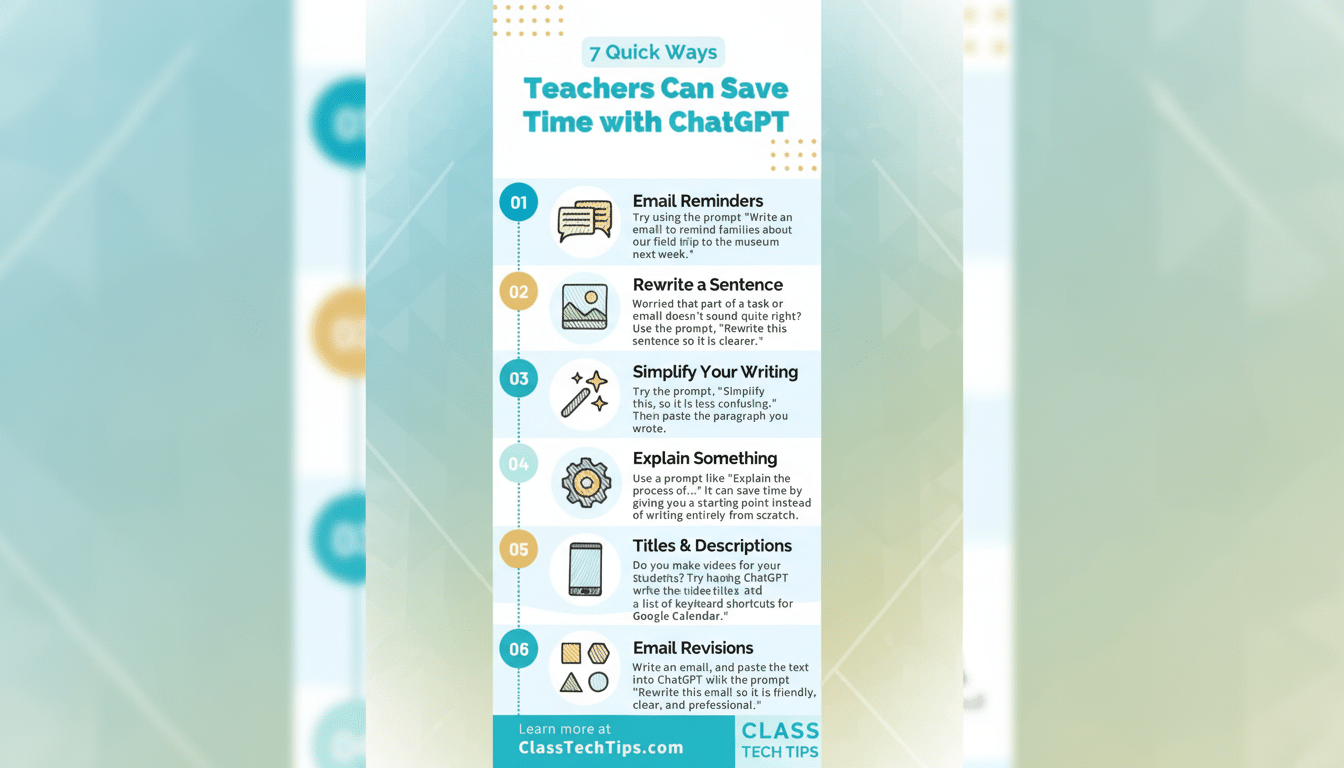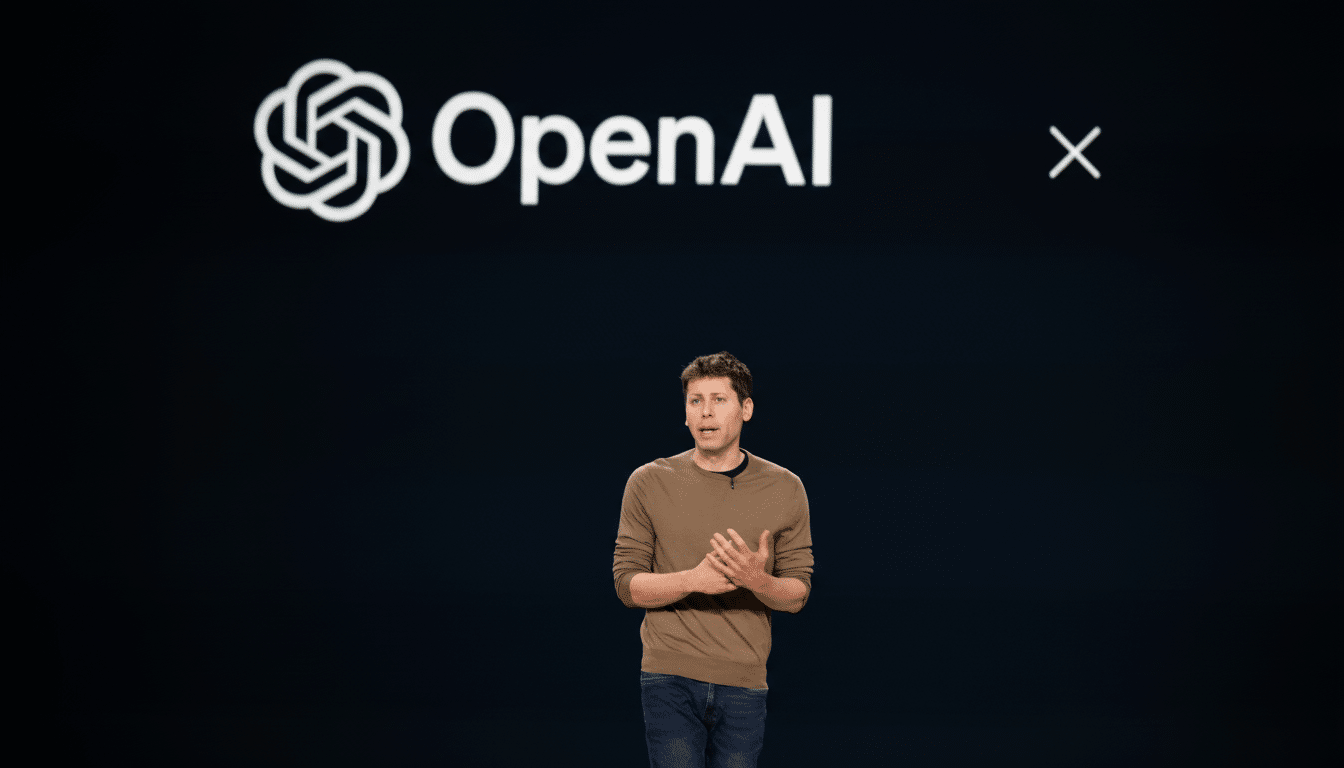To further facilitate the use of AI in a way that is beneficial and valuable to teachers, we are excited to introduce ChatGPT for Teachers, a customized space made specifically for K–12 educators designed to reduce planning time, streamline grading workflows, and allow for efficient communication.
The company says the functionality provides verified educators full access to the latest ChatGPT capabilities alongside school-ready controls and privacy protections. Early access already extends to 150,000 teachers and staff in U.S. districts, and OpenAI will make the workspace free for verified educators for an extended introductory period.
- What the Educator Workspace Comes With and Key Features
- For Schools: Privacy, Compliance Requirements, Protections
- Why It Matters to Teachers and Reduces Workload
- Positioning in the EdTech Landscape and Competitors
- Risks and Guardrails for Responsible Classroom Use
- What to Watch Next for Adoption and Research Evidence

What the Educator Workspace Comes With and Key Features
Now, the workspace comes with unlimited messages for ChatGPT alongside search, file uploads, third-party connectors, and image generation. It adds educator-specific onboarding, admin controls, and ready-to-use prompt libraries optimized for classroom activities. Teachers can work with their colleagues in a common area, co-construct custom GPTs for a particular department, and standardize prompts for uniform lesson design across grade levels.
Importantly, the tool fits into school workflows as they currently exist. Teachers can import documents from Google Drive or Microsoft 365, and with just a few clicks, give ChatGPT context (unit plans, past assessments, or even data sets for rapid text analysis). In application, that could look like a teacher being able to upload the benchmark results from last semester and ask the model to surface misconceptions, compose differentiated practice sets, or generate parent updates in several languages that represent each class’s progress.
For Schools: Privacy, Compliance Requirements, Protections
OpenAI says that ChatGPT for Teachers is built with “education-grade” privacy, security, and compliance protections that it argues are meant to meet the requirements of the Family Educational Rights and Privacy Act. In this model, the student data that educators input is not preserved for training the model beneath it, which should help alleviate key concerns for districts that need to keep personally identifiable information safe and follow data governance requirements.
More than just being FERPA-compliant, the workspace provides the administrative controls schools need to ensure that role-based access to shared assets and policy settings are aligned with local guidelines. District leaders will continue to determine how and where the tool fits within existing data processing agreements and identity protections for younger learners (particularly in places where COPPA compliance or state privacy statutes are in force).
Why It Matters to Teachers and Reduces Workload
Teachers routinely shoulder heavy workloads. Surveys from groups like RAND and the O.E.C.D. have discovered that many educators work more than 50 hours a week, with significant time spent planning, grading, and communicating outside class. A tool that can write standards-aligned lesson plans, create rubrics, adapt reading passages for multiple levels, or transform formative data into exit tickets has the potential to give teachers precious hours of their lives.

OpenAI describes the launch as part of a wider move towards AI going mainstream as basic learning infrastructure. Leah Belsky, the company’s vice president of education, has emphasized that students are increasingly visiting ChatGPT as a 24/7 study buddy, and that teachers will play a critical role in delineating how families and classrooms use these tools responsibly. For many teachers, the real draw will be if the workspace cuts down on friction rather than adds further oversight.
Positioning in the EdTech Landscape and Competitors
ChatGPT for Teachers enters a crowded — and fast-developing — space. Microsoft is pitching Copilot to schools via its education suite, while Google has introduced generative AI tools into Workspace for Education, and Khan Academy’s Khanmigo still pilots AI tutors and planners. OpenAI’s strategy in this instance is squarely teacher-first: a safe, educator-mediated setting that prioritizes collaboration and compliance over a student-facing chatbot.
The company has been forging education partnerships over the past year, such as a national AI professional learning initiative with the American Federation of Teachers and deals that allow college systems to use ChatGPT. OpenAI has also had conversations with ministries of education outside the U.S., suggesting that it wants to influence both classroom practice and policy discussions.
Risks and Guardrails for Responsible Classroom Use
Generative AI models are still far from perfect and can be biased or produce mistakes. Advice from the U.S. Department of Education’s Office of Educational Technology and UNESCO emphasizes keeping humans in the loop, documenting prompts and outputs, and avoiding high-stakes automated decisions. Districts will probably pair ChatGPT for Teachers with local guardrails — clear principles about when and how to use AI for feedback, whether plagiarism is taken into account, and strict limits on entering sensitive information.
Detection algorithms for AI-generated student work are unreliable, so schools shouldn’t rely on them as enforcement tools. Instead, many are moving focus to the process, oral defense, and authentic tasks with AI supporting scaffolds and feedback. Implemented purposefully, a teacher-facing workspace can help reinforce these changes by automating low-level grunt work and freeing up time for better teaching.
What to Watch Next for Adoption and Research Evidence
Adoption will depend on district purchasing, integration with learning platforms, and professional development. Look for integrations with learning management systems (like Canvas and Google Classroom), roster support with tools like Clever or ClassLink, as well as single sign-on for ease of access. Also critical will be independent research: evidence of time saved, improvements in instruction quality, and impacts on equity. If those results come to pass, ChatGPT for Teachers could represent a significant shift in how academia and K–12 schools put AI to work — a move away from the process of playing around with it toward integrating it into one’s day-to-day workflow.

